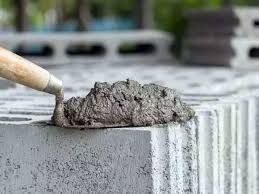
Cement
Get Price Quote

Cement
500 Per Bag
Vangala Pattabi Ramula, a reliable Cement Agency in Manakondur, offers top-quality cement for all construction needs.Call us on 98495 87485 for more details and orders.Vangala Pattabi Ramula is a trusted Cement Agency in Manakondur, offering high-quality cement products for all your construction needs. Whether you're building a home or a commercial space, we provide reliable and durable cement options.Contact us today on 98495 87485 for inquiries and orders.Experience the difference with Vangala Pattabi Ramula Cement Agency!
Best Deals from Birla A1 Cement

Cement
Get Price Quote
50 Metric Ton (MOQ)
We offer cement. Portland cement - ordinary grey portland cement 42.5 r - bs 121996 or din en 197-1:2000 or astm c-15 portland cement (often referred to as opc, from ordinary portland cement) is the most common type of cement in general use around the world because it is a basic ingredient of concrete, mortar, stucco and most non-specialty grout. It is a fine powder produced by grinding portland cement clinker (more than 90%), a limited amount of calcium sulfate (which controls the set time) and up to 5% minor constituents as allowed by various standards there are two types of gray portland cement: ts en 197-1-cem I with 42.5r and 52.5n standards. The strength of these types depends on the high amount of c3s in the cement. These are the most popular cement types, especially in the high strength concrete class and in the construction of tall buildings. It is popular in pre-stretched prefabricated applications in particular, tunnel mould systems and in the construction of mass housing.
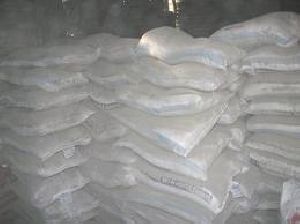
Cement
Get Price Quote
ü Silica ü Calcium Oxide ü Loss on Ignition ü Insoluble Residue ü Iron as Fe2O3 ü Alumina as Al2O3 ü Sulphuric Anhydride ü Magnesia as MgO ü Chloride ü Combined Oxide Test Method : IS 4032 : 1985, Reaffirmed 2009. Mechanical testing ü Consistency ü Setting Time ü Compressive Strength ü Fineness Blaine ü Soundness (Le-chatelier) ü Soundness (Autoclave) ü Drying Shrinkage ü Density ü Fineness by dry sieving Test Method : IS 4031 : 1988 (P-12,4,5,6,3,10,11) Reaffirmed 2009 Third party witness is provided in our laboratory. Compressive strength: The most common strength test, compressive strength, is carried out on a 50 mm (2-inch) cement mortar test specimen. The test specimen is subjected to a compressive load (usually from a hydraulic machine) until failure.Test Method: IS: 4031 (P-6) 1988 Fineness: The fineness of cement has an important bearing on the rate of hydration and hence on the rate of gain of strength and also on the rate of evolution of heat. Greater fineness increases the surface available for hydration, causing greater early strength and more rapid generation of heat. Cement fineness play a major role in controlling concrete properties. Fineness of cement affects the place ability, workability, and water content of a concrete mixture much like the amount of cement used in concrete does.Test Method: IS: 4031 (P-2)1990 Loss On Ignition: This test helps in determining the inorganic analytical chemistry, particularly in the analysis of minerals. It consists of strongly heating ("igniting") a sample of the material at a specified temperature, allowing volatile substances to escape, until its mass ceases to change.Test Method: IS: 4032-1985 Setting Time: Initial setting time is the time that elapsed from the instance of adding water until the paste ceases to behave as fluid or plastic. Whereas final setting time referred to the required for the cement paste to reach certain state of hardness to sustain some load.Test Method: IS: 4031 (P-5) 1996 Soundness: Soundness refers to the ability of a hardened cement paste to retain its volume after setting. Lack of soundness is observed in the cement samples containing excessive amount of hard burnt free lime or magnesia.Test Method: IS: 4031 (P-3) 1990 Chemical Analysis Chemical analysis of hardened concrete can provide a wealth of information about the mix constituents and possible causes of deterioration. Standard methods can be used to find the cement content and original water/cement ratio, but many other properties can also be established; Cement Content and Aggregate Cement Ratio, Cement Content and Pulverised fuel ash/fly ash (pfa) content, Cement Content and Slag content, Water/Cement Ratio, Aggregate Grading, Determination of the presence of High-Alumina Cement (HAC)Test Method: IS: 4032-1985, RA 2005.
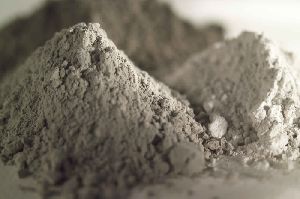
Cement
650 Per 10000 Kilogram
1 metric ton = 1 ton jumbo bag packed in 45-48 kgs pp bag , hdpe bag (if required once usedfine quality bag , jumbo bag (1 metric tonne ) and also loose packing We offer cement. Packing:50 kg bag in pppaper bags1 metric ton = 1000 kgs which can be packed in(21 to 22 bags)1 metric ton = 1 ton jumbo bagpacked in 45-48 kgs pp bag , hdpe bag (if required onceusedfine quality bag , jumbo bag (1 metric tonne ) andalso loose packing
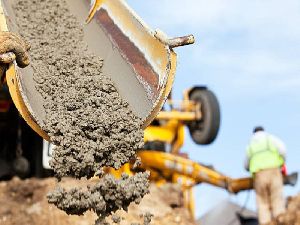
Cement
Get Price Quote
Cement is a binder, a substance that sets and hardens independently, and can bind other materials together. The word "cement" traces to the Romans, who used the term opus caementicium to describe masonry resembling modern concrete that was made from crushed rock with burnt lime as binder. The volcanic ash and pulverized brick additives that were added to the burnt lime to obtain a hydraulic binder were later referred to as cement. Cement used in construction is characterized as hydraulic or non-hydraulic. Hydraulic cements (e.g., Portland cement) harden because of hydration, chemical reactions that occur independently of the mixture's water content; they can harden even underwater or when constantly exposed to wet weather. The chemical reaction that results when the anhydrous cement powder is mixed with water produces hydrates that are not water-soluble. Non-hydraulic cements (e.g. gypsum plaster) must be kept dry in order to retain their strength. The most important use of cement is the production of mortar and concrete—the bonding of natural or artificial aggregates to form a strong building material that is durable in the face of normal environmental effects. Concrete should not be confused with cement, because the term cement refers to the material used to bind the aggregate materials of concrete. Concrete is a combination of a cement and aggregate. Broadly cement is classified into two categories: OPC - Ordinary Portland cement PPC - Portland Pozzolana Cement OPC - Ordinary Portland cement OPC (Ordinary Portland Cement) is obtained by adding raw materials like calcareous materials and argillaceous materials. OPC (Ordinary Portland Cement) is the basic form of cement with 95% of it being the clinker and 5% being gypsum which is added as an additive to enhance the setting time of the cement to a workable 30 minutes odd or so. This cement is the standard norm being manufactured and sold by cement manufacturers around the world. OPC is environment friendly as well as economical. As the Understanding-Cement website puts it: "In particular, 'Ordinary Portland Cement' is the normal, grey, cement with which most people are familiar". Ordinary Portland Cement (OPC-53, OPC-43, OPC-33) are the common grades. OPC - Ordinary Portland cement The 43 grade OPC is the most popular general-purpose cement in the country today. The production of 43 grade OPC is nearly 50% of the total production of cement in the country. The 43 grade OPC can be used for following applications: General Civil Engineering construction work PPC - Portland Pozzolana Cement RCC works(preferably where grade of concrete is up to M-30) Pre-cast items such as blocks, tiles, pipes etc Asbestos products such as sheets and pipes Non-structural works such as plastering, flooring etc The compressive strength of cement when tested as per IS code shall be minimum 43 MPa. The physical and chemical properties of this cement are given in the table: Physical Characteristics of 43 Grade OPC (BIS Requirement) Is Code Finene SS (sq.m/k g Min) Soundness by Setting Time Compressive Strength Lechatlier (mm)max Auto clave Max (%) Initial (mts) min Final (mts) Max 1 day Min Mpa 3 day Min Mpa 7 day Min Mpa 28 day Min Mpa (IS 8112- 1989) 225 10 0.8 30 600 Not specified 23 33 43 Chemical Characteristics of 43 Grade OPC (BIS Requirement) Is Code Lime Saturation Factor Alumina Ration Min Insoluble MgO (%) Sulphuric Anhydride Loss ignition (%) Max (IS 8112 - 1989) 0.66 Min 1.02 Max 0.66 3 6 2.5% Max when C3A is 5 or less. 3% Max when C3A is greater than 5 5 Portland Pozzolana Cement (PPC) : The Portland Pozzolana Cement is a kind of Blended Cement which is produced by either intergrinding of OPC clinker along with gypsum and pozzolanic materials in certain proportions or grinding the OPC clinker, gypsum and Pozzolanic materials separately and thoroughly blending them in certain proportions. Pozzolana is a natural or artificial material containing silica in a reactive form. It may be further discussed as siliceous or siliceous and aluminous material which in itself possesses little, or no cementitious properties but will in finely divided form and in the presence of moisture, chemically react with calcium hydroxide at ordinary temperature to form compounds possessing cementitious properties. It is essential that pozzolana be in a finely divided state as it is only then that silica can combine with calcium hydroxide (liberated by the hydrating Portland Cement) in the presence of water to form stable calcium silicates which have cementitious properties. The pozzolanic materials commonly used are: Volcanic ash, Calcined clay, Fly ash, lica fumes. Irrespective of the requirement of Cement, whether it is large or small, we are here to help our customers in every aspect Global Trade Links Cement from the most renowned brands such as: JSW Cement Chettinad Cement Our friendly and experienced team can help you to decide which size, grade and finish will work best for you. So for more information, help and advice, do send us an email at

Cement
Get Price Quote
We offer cement. Packing: 50 kg bag in pppaper bags 1 metric ton = 1000 kgs which can be packed in (21 to 22 bags) 1 metric ton = 1 ton jumbo bag packed in 45-48 kgs pp bag , hdpe bag (if required once usedfine quality bag , jumbo bag (1 metric tonne ) and also loose packing
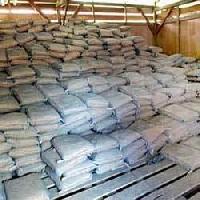
Cement
Get Price Quote
We are one of the dependable Exporters and Suppliers of Cement in Chennai (India). We offer the best quality Cement in the market. The Cement is widely used in a large number of construction purposes and industrial sectors. The clients can avail the Cement in various types of packing as per their requirement. Color : Grey, White Payment Terms : FOB, C&F, CIF

Cement
Get Price Quote
10 Bag(s) (MOQ)
We are offering cement. bmm cement features the latest dry process technology, uses pre-calciner for quality cement. we sell following types of bmm cements : - ordinary portland cement - portland blast furnace slag cement and - portland pozzalana cement. all above products comply with the quality standards specified by the bureau of indian standards ("bis"). we currently have 43 grade and 53 grade opc cement. And blended cements by psc and ppc.

Cement
Get Price Quote
Opc portland cement by leading manufacturers of international repute from india pakistan peru usa china gulf countries.

Cement
Get Price Quote
We are Authorized Dealers & Suppliers of: * JSW Cement * Priya Cement * Zuari Cement Sree Arumuga Steel Traders is a Authorized Dealers & Suppliers of JSW Cement, Priya Cement & Zuari Cements in Chennai. We provide high quality cement of reputed and reliable brands such as JSW Cement, Priya Cement, Zuari Cement.
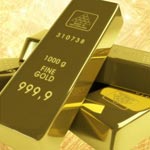
Cement
Get Price Quote
500 Kilogram (MOQ)
Hello Friends , We have High Grade reliable Cement Available from UK ,Interested Parties can contact us for Steady and feasible Longterm Purchase !!

Cement
330 Per Bag
We are wholesale dealers we are dealing with all kind of cement payment against delivery.

Cement
Get Price Quote
Cement, Urea, Steel Scrap, Printed Packaging Box, Paper Scrap, HMS Scrap

Cement
Get Price Quote
Cement, Copper Ore, Metal Scraps, Gold Scraps, Gems, Metal Scraps, Iphones

Cement
Get Price Quote
Cement, River Sand, Bricks and Pavers, blue metals, Steel & Steel Products

Cement
Get Price Quote
Cement, Concrete Paving Blocks, Deformed Bars, GV Pipes, cement boards

Cement
Get Price Quote
Cement, Building Materials, Sand, Bathroom Fitting, Sanitary Ware

Cement
Get Price Quote
Cement, Construction Materials, Floor Tiles, Sand, Tiles, TMT Bar